Affiliate links on Android Authority may earn us a commission. Learn more.
ThL T100S full review - hands-on with an octa-core smartphone
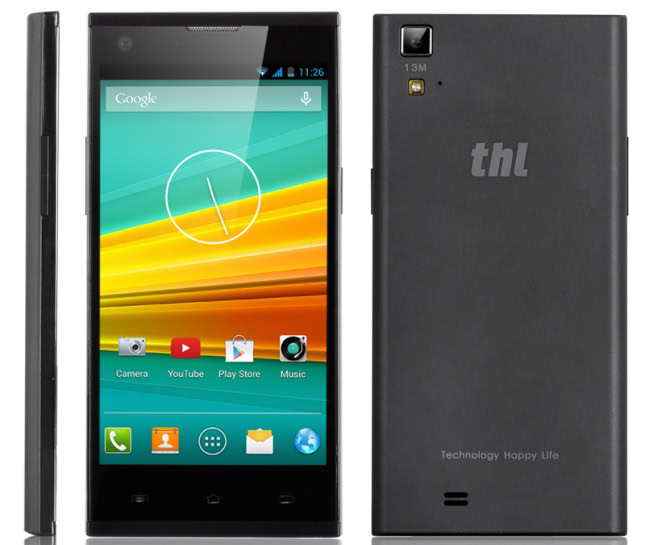
Unlike Samsung’s eight core Exynos processors, which have two different core types (Cortex A7 and A15), the MediaTek MT6592 use eight Cortex-A7 cores. A Cortex-A7 core uses less battery than a Cortex-A15 core but is less powerful. In terms of performance the A7 is aptly named as it is about 20% faster than the Cortex-A5, but slower than the Cortex-A9 when running at the same frequency. The key to the MT6592’s performance is that it runs at 1.7 GHz and has eight of those A7 cores!
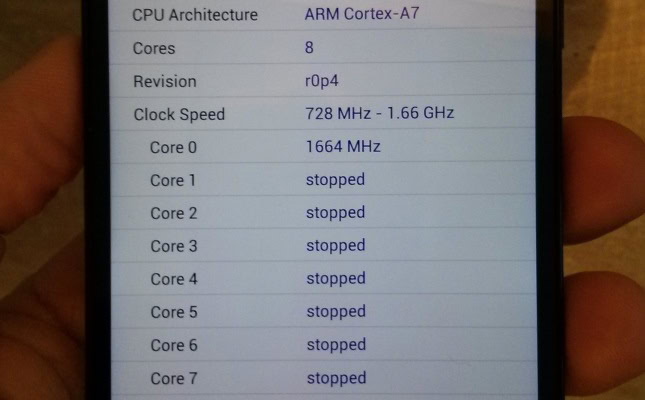
I received the ThL T100S a few days ago and I have been using it exclusively as my main phone over the holiday period. I don’t want to jump ahead of myself but the T100S is a pleasure to use. However, first let’s look at the raw specification:
- Display: 5 inch full HD display using OGS (One Glass Solution)
- Processor: 1.7 GHz MT6592 True Octa-Core with Mali-450 GPU
- RAM: 2GB
- Android: 4.2
- Wi-Fi: 802.11 b/g/n
- Cellular: 2G – GSM 850/900/1800/1900 MHz and 3G – WCDMA 850/2100 MHz
- Connectivity: Bluetooth, GPS, NFC
- Cameras: 13 Megapixel Rear Camera + 13 Megapixel Front-Facing Camera
- Battery Size: 2300mAh
- Storage: 32GB and a microSD slot with support for another 64GB
- Dimensions: 144 x 70 x 9mm (L x W x D)
- Weight: 147g
In terms of size, the T100S is about as wide as a Nexus 4 or Nexus 5 but about one centimeter longer. This can make the phone look long at first sight, however that feeling disappears very quickly. The T100S’ black design is complimented by a dark grey back cover. The top and bottom of the device are made from a hard textured material that gives the phone a carbon-fibre type look. The corners of the device are rounded towards the back but are well defined, even sharp, where they meet the screen. On the back the rear camera is found in the top left hand corner with a very bright LED Flash just below it. The speaker grill is towards the bottom. The volume rocker is on the left and the power button on the right. At the top is the headphone jack and surprisingly the microUSB port for charging the device and connecting it to your PC. When the device is off or sleeping the display blends in well with the surrounding bezels and from a short distance the phone looks like a thin black slab. Only the silver speaker grill on the front breaks the uniformity of the finish.
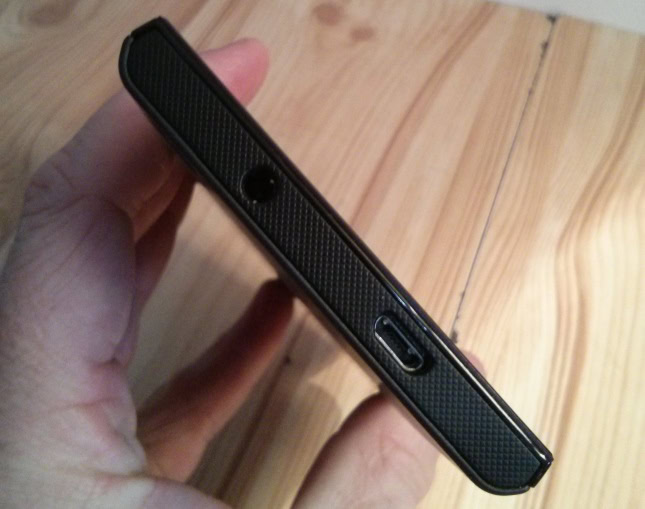
Overall the design is sleek and pleasing. It is easy to hold in the hand and feels well built. At 147 grams it is only marginally heavier than a Nexus 5 and you never get the feeling that you are holding a monster phone.
The display on the T100S is very good. With its full HD (1920 x 1080) resolution the definition is great and the color reproduction is true to life but not overly vivid. The brightness is great and often indoors the brightness can be set as low as 10 or 15 percent.
With a pixel density of 441 pixels per inch you get a clear, sharp display with crisp text and high detail. Playing games, reading, watching movies or viewing photos are a pleasure on this device and although there are certainly better displays out there, this one adds to the overall great experience of the T100S.
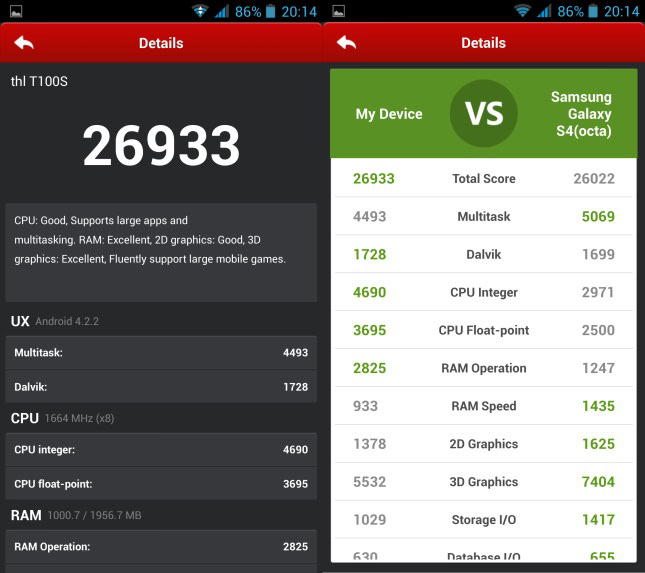
The key selling point of the T100S is its octa-core processor, so how fast is it? First we need to establish some context. The Cortex-A7 core isn’t ARM’s fastest, in fact Cortex-A9 and Cortex-A15 based processors can easily beat a Cortex-A7 processor if they all have the same number of cores and run at the same frequency. But the magic behind the MT6592 is that it runs at 1.7 GHz, that is same speed at the quad-core processor in the HTCOne but faster than say the quad-core Qualcomm Snapdragon inside the Nexus 4. However it is clocked lower than the quad-core Qualcomm Snapdragon in the Nexus 5. But unlike the HTCOne, Nexus 4, Nexus 5 and so many other high-end phones, this beast has eight cores. So how do eight Cortex-A7 cores compare to four Krait or four Cortex-A15 cores?
The T100S AnTuTu scores are impressive. Although it doesn’t take one of the top spots, the T100S manages a score of 26933. That makes it faster than the HTCOne, faster than the Exynos-octa version of the S4 and faster than the Galaxy Note 2. However it is still bested by phones like the LG G2, the Xiaomi MI3 and the Galaxy Note 3.
For Epic Citadel, the demo app for the Unreal 3D engine, the T100S managed 40.7 frames per second (fps) on the High Performance setting and 39.4 fps on the High Quality setting. These are very good scores considering that the processor is generating all that graphics data for a 1920 x 1080 full HD display.
That makes the T100S 19% faster than than the LG G2 and 74% faster than the Note 3!
However, the GPU in the MT6592 is the Mali-450, which although more than competent, lags behind the Adreno 320, the Adreno 330 and the Mali-T628. So for benchmarks which include 3D graphics the T100S isn’t going to break any records. GPU tests are important and since many people play 3D games on their devices this component is necessary for any general benchmark. But what about raw CPU power?
To test just the raw CPU power I used CF-Bench and CPU Prime Benchmark both of which test the CPU and memory performance without using the GPU. For CF-Bench the device scored 42906. To put that into some context the quad-core Snapdragon S4 Pro in the Nexus 4 manages 13866, the Galaxy Note 3 scores 24653, while the LG G2 notches up 35999. That makes the T100S 19% faster than than the LG G2 and 74% faster than the Note 3!
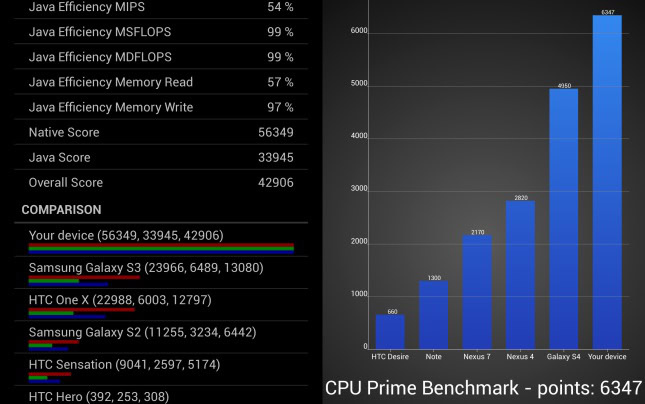
A device with a 1.2 GHz MTK6589, which is a quad-core Cortex-A7 CPU, scores around 12000. So clearly the octa-core chip is far superior to its quad-core baby brother even when considering the bump in clock frequency and the additional cores.
The story is the same when using CPU Prime. The T100S scores 6347 compared to 4950 for the Samsung Galaxy S4 and 2820 for the Nexus 4. This all means that in terms of raw CPU power the MediaTek MT6592 is much faster than the current range of processors from Qualcomm and Samsung.
In terms of GPS performance the T100S is excellent. I stepped outside and activated the GPS and within two seconds the device had a lock! The GPS test app that I use reported that 18 satellites where visible (with eight being used to get the lock) which is more than I have ever seen while testing the GPS on a phone!
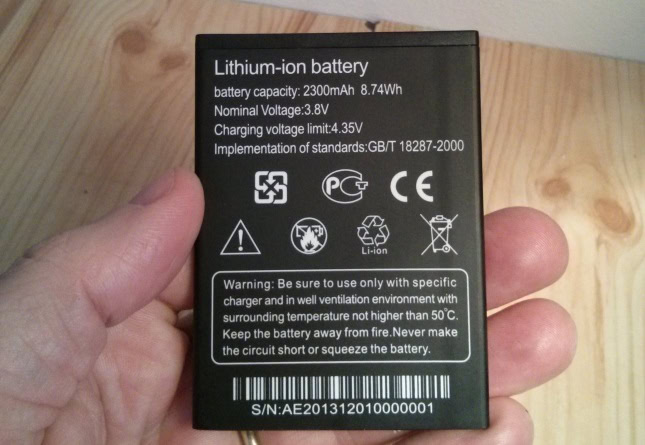
Every superhero has their weakness, with Achilles it was his heel, with Superman it is Kryptonite and with the T100S it is the battery. The device comes with a removable 2300mAh battery which in all honestly could do with being a bit larger. The battery is the same size as the one in the Nexus 5 and slightly larger than the one in the Nexus 4. The battery will be a disappointment to power users but depending on your usage you may get a full day (morning to evening) of use from it, but it is probable that a top-up charge during the day will be necessary.
I did some tests to try and generate some battery usage numbers and the results are a bit of a mixed bag. When running Epic Citadel in its Guided Tour mode the phone only lasted two hours before it ran out of juice. Also by the end of that time the back of the phone was quite warm to the touch.
For YouTube streaming (over Wi-Fi) the device does a bit better and can handle about three and a half hours on one charge. Watching an MP4 movie from the internal storage yields around four and a half hours of viewing pleasure. I did a simple 3G talk time test and the device will handle around 10 hours of calls, 2G talk time will likely be even longer.
The talk times are nothing special but neither are they bad, however at the other extreme, the Epic Citadel play time isn’t good at all and the multimedia tests tend towards the poorer end of the battery life scale. All the tests were carried out with the screen on half brightness, syncing enabled and Wi-Fi on.
The phone has all the standard connectivity options like Wi-Fi (802.11 b/g/n), Bluetooth, 2G GSM and 3G. It also has NFC but it doesn’t support LTE. There are two SIM card slots, one takes a normal sized SIM and the other is for a micro SIM. The T100S supports 3G on 850 and 2100MHz. The latter number is the “normal” 3G frequency and should work in most places around the world, however a lot of carriers also use a secondary 3G spectrum range. In Asia and South America this is often 850MHz, but in Europe it tends to be 900MHz. Unfortunately the 3G won’t work in the USA, however standard GSM calls should work. You need to check with your carrier to ensure compatibility or if you trust Wikipedia then the List of UMTS networks page could have the information you need.
I compared the Wi-Fi signals strengths of the T100S with other devices I have and it performed equally as well. I was able to access the Internet from all around the house and outside without any problems.
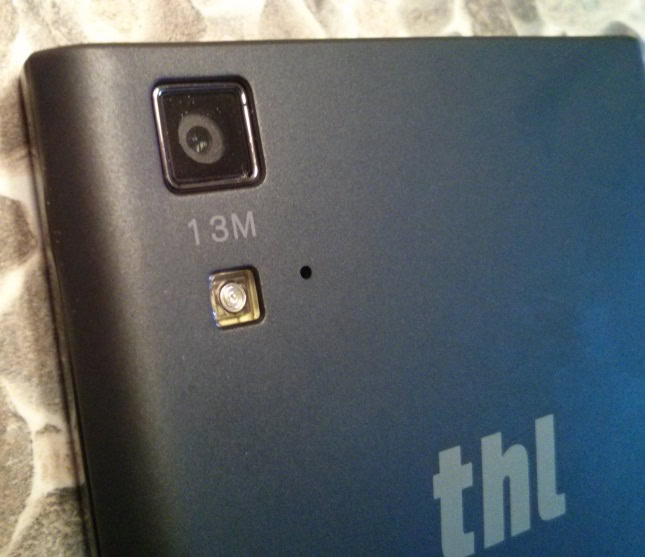
If 2013 was the year of the Selfie then the T100S is certainly a welcome product for some. Not only does the device have a 13MP rear facing camera, it also has a 13MP front facing camera. The difference between the two is that the rear facing camera has auto-focus, a flash and can record video at 1280 x 720, while the front facing camera has a fixed focus (like most front facing cameras) and only records video at 640 x 480.
Overall the camera is good but not excellent. The camera app is the standard app with features like HDR, face recognition and burst mode etc. The camera is quick to focus and the flash is quite powerful (for a smartphone). However the pictures can lack vitality and color. Of course these can be easily tweaked using the built-in image editor. Here are a few shots from the camera:



The T100S comes with stock Android 4.2.2 with only a few minor tweaks. Apart from the fact that the Settings app uses color icons, the main addition is a setting in the Battery section of the Settings which enables “CPU power saving mode.” According to the description this limits the maximum CPU performance to conserve battery life and lower the device’s temperature. I did some testing with the option enabled and disabled and although the device did perform slightly worse in the benchmarks with the performance “limited” it was only about a 1 percent difference in performance which is actually within the norm of fluctuations for the standard benchmarks.
Since the T100S also has NFC connectivity, something you don’t see on many Chinese devices, I did a quick test using Android Beam between it and a Nexus 7. I was able to transfer photos and URLs without any problem.
The device comes with full Google Play support and all of the normal Google apps are available. For those Google apps not pre-installed, a quick trip to the Play Store gets you everything you need. Also the 32GB of internal storage gives you plenty of space or all your games, music and even video. It is worth mentioning that the 32GB is divided into 6GB of internal storage and 22GB of phone storage. There is an option in the Apps section of the Settings to move apps from the internal storage to the phone storage, very much like the “move to SD card” functionality on other Android phones.
One final thought on the software, although the device does come with Google Voice Search it doesn’t come with Google Now. That means those of you who rely on Google Now won’t like the T100S.
The ThL T100S should be considered as a brand name phone, albeit a minor brand name from an international perspective. In China the ThL brand is popular and the company has over 340 stores across the country. Comments often left at the bottom of reviews about Chinese designed and manufactured phones show that consumers fear the radiation levels of these devices, however this is generally unfounded and is basically FUD (fear, uncertainty and doubt). I recently found out that the SAR (specific absorption rate) of the ThL W100, a quad-core phone from the same company which I reviewed during the summer, is 0.75 W/kg, which is far less than every model of iPhone ever produced. I don’t have specific information about the T100S but there is no reason to think that it isn’t within international limits.
The ThL T100S is a great phone and excels in many areas including its performance. But it also has its weak points like the lack of LTE and the battery life, but when you consider the price these maybe forgivable. Talking of the price, the T100S is available for just $310 plus shipping and any local import taxes. Considering that phones with similar levels of performance and full HD screens can cost twice that amount, the ThL T100 is a bargain! It can be bought from Chinavasion which ships worldwide.